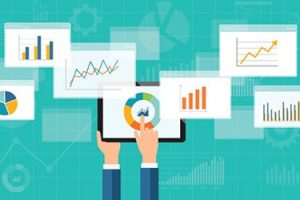Data without context can lack insights as it only states the obvious—what happened, what was measured, what took place. By 2020, there will be around 44 zettabytes of data—that’s enough data to fill 1.3 trillion iPhones. The larger problem is what to do with the data.

Data warehousing, data integration, connectors, data dashboards and more, have all been tools sold by various industries all promising visibility and transparency and transformational change. All of this is eerily similar to the dot-com boom of the late 90s where the promise of a website would suddenly open the floodgates to new conversions and leads.
As with many things, history repeats itself. Over the past year, businesses have accumulated tons of data. Alation dubbed it, “the year of the data catalogue,” and Forrester estimates that between 60 percent-73 percent of all data accumulated goes unused. Data cannot single-handedly change the way we do business as much as a yardstick can build a house.
We need to change the mindset and focus on analysis and insights instead of just data. Here’s how:
Data Analysis Needs To Drive Decisions
Instead of reporting on what is current or what happened, it is important to ask for recommendations of what needs to change. It’s not enough to be shown where your web visits were week-over-week, instead, question why web visits fluctuated in the first place, while finding a solution behind what needs to be done to change that. This kind of analysis requires more than just a chart of visits over time. It requires knowledge of other variables that could factor into that dip. Did the media spend decrease? Did a competitor outbid your search keywords? Was there a new site update that affected user experience? When analyzing data, there should always be a call to action—what needs to be done to change what is currently happening?
Data Analysis Needs To Uncover Hidden Patterns
At times, it isn’t clear the questions to the answers we’re seeking. Now that data has increased in size and number of sources, one can use advanced technologies like machine learning and neural networks to find previously unknown correlations. These will be less obvious correlations between data, and not as simple as media spend vs impressions, or creative type vs conversions. Could there be additional unknown correlations such as Instagram likes vs conversions, or social listening volume vs average order value?
Data Analysis Has More Value In Predicting, Not Reporting
It’s not enough to know the status quo. As of now, all data reporting shows what has happened—even real-time analysis has a delay between the time the action has happened and the time the data has been appropriately captured, labeled, stored and retrieved. According to Microstrategy, “the future of predictive analysis is undoubtedly closely tied to artificial intelligence.” Predictive analysis allows a business to be more proactive than reactive to market trends. They will be able to change the way they work, mitigate risk more effectively, and reduce the spin of scenario planning.
Mary Meeker publishes one of the most highly anticipated trends reports in technology. In her 2019 Internet Trends report, Meeker comments that the sudden increase in data growth feels like we’re “increasingly drinking from a data firehose”. While data analysis and reporting can feel like a daunting task, nearly two of three companies are making the leap forward through existing tools and services.
Overall, advanced data analytics is being used in all facets of how businesses work, including accounting and financial reporting, human resources and organization management, and results-driven advertising. Businesses need to change their mindset and identify where data can make the biggest impact, otherwise major opportunities are bound to be missed.
About The Author
As head of Hawthorne’s Data Science, Information Systems, and IT departments, Justice Erolin manages the technologies, systems, and processes to enhance and run Hawthorne’s product management. Justice has used his 15-year experience in developing and deploying systems and applications to solve urgent business needs for brands including Volkswagen, Sony, Apple, Coca-Cola, Taco Bell, and Anthem.
Outside of work, Justice loves to cook for large groups and will spend up to 21 hours making the perfect brisket.





